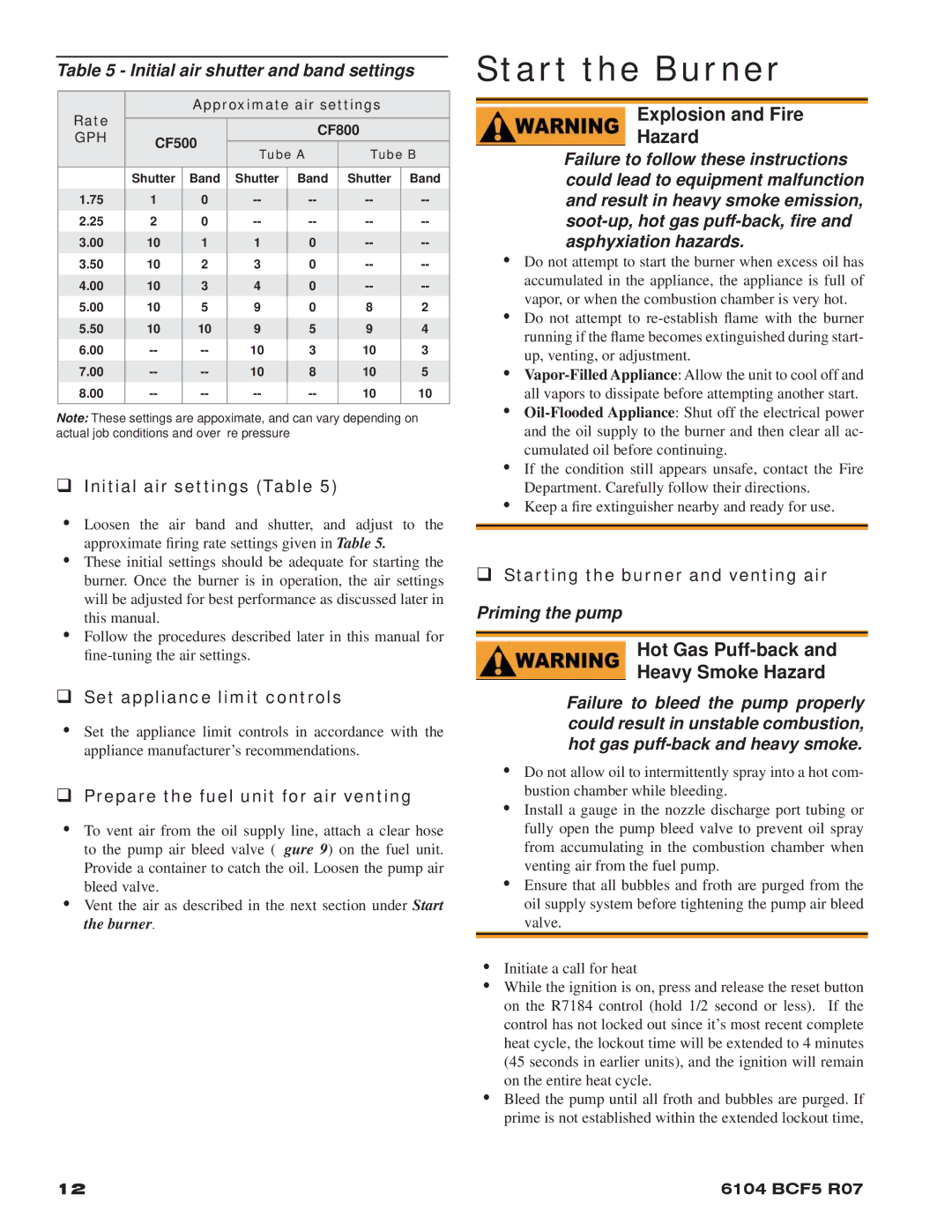800, CF500 specifications
The Beckett CF500 and CF800 are advanced oil-fired boiler systems designed to provide reliable heating solutions for both residential and commercial applications. Known for their efficiency and cutting-edge technology, these models exhibit a variety of features that distinguish them in the heating market.One of the standout characteristics of the Beckett CF500 and CF800 is their high combustion efficiency. Both models utilize a unique air control system that optimizes the air-fuel mixture, ensuring complete combustion and reducing emissions. This not only enhances performance but also benefits the environment by minimizing the carbon footprint.
The CF500 features a compact design, making it ideal for installations in tighter spaces. Its rugged construction ensures durability and longevity, often requiring less maintenance than competing systems. This model is equipped with advanced safety features, including a primary safety control and a backup safety circuit, ensuring secure operation in any conditions.
On the other hand, the CF800 is designed for larger applications, boasting a higher capacity and output. Its powerful burner system can handle higher BTU outputs, making it suitable for demanding heating needs. Like the CF500, the CF800 also features the advanced air-fuel management system, along with an innovative ignition system that guarantees quick starts and efficient operation.
Both models are engineered for ease of installation and maintenance. Their intuitive design allows for straightforward setup, while accessible components simplify routine servicing. Additionally, Beckett offers comprehensive support and resources, ensuring users can operate their systems effectively and efficiently.
Another notable technology integrated into these models is the noise reduction features. The quiet operation of both the CF500 and CF800 allows for a comfortable indoor environment, whether it's in a residential setup or a commercial facility.
In summary, the Beckett CF500 and CF800 represent a blend of efficiency, safety, and ease of use in oil-fired heating solutions. Their advanced features and technological innovations not only meet the heating demands of various applications but also support environmentally-conscious practices, making them an excellent choice for modern heating systems.

